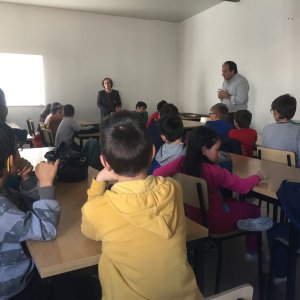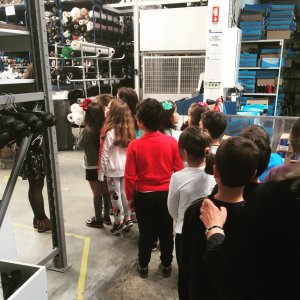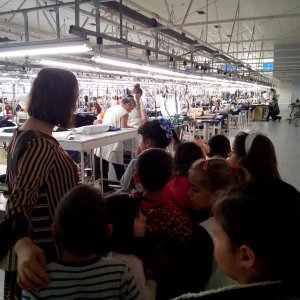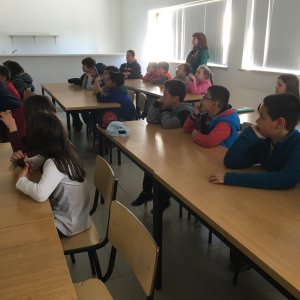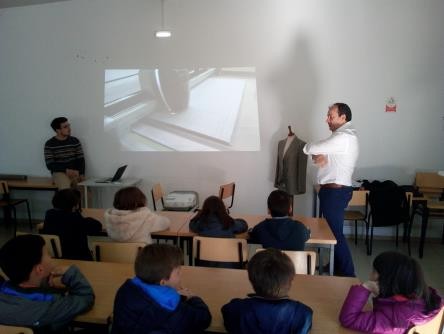

Where does our clothing come from? Visit to CBI
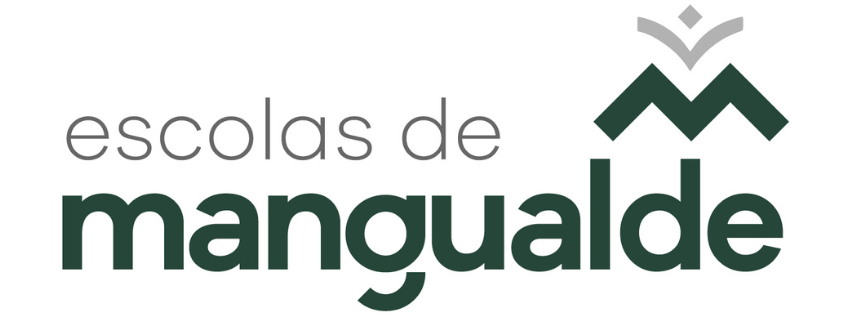
Activity description
The visit to the company “CBI: Clothing Industry” aims to provide students with the opportunity to observe the clothing manufacturing process. During the visit, students assess the influence of other countries and cultures on the pieces the company develops, observe the different raw materials used in clothing design, and the various stages the products go through until the final item is produced.
At the same time, they are challenged to answer some mathematical questions, particularly unit fractions related to fabric cutting (clothing pieces) to reduce waste.
1 computer, speakers, and projector
1 document camera
Labels with names of raw materials
Clothesline and 4 clothespins with fractions drawn (1/2, 1/4), labels with the numbers 0 and 1
1 tablet with the Plickers app
Printed Plickers cards, 1 per student
Production of a video in collaboration with the company, focusing on the main stages in the production of a coat, explained by employees
Permissions from Guardians
Scheduling transportation with the Municipality
Student profiles
Essential learnings
Activity guides
Activity Introduction
The students are welcomed in a room by one of the company’s managers. Using the previously produced video as support, the company representative provides context about the business activity, focusing on the production of a coat—from raw materials to manufacturing and finishing, waste management and safety, and the influence of other countries on the production and development of clothing items.

The class is divided into 2 large groups (about 12 students each):
-
Group A – Exploration of various raw materials and application of garment pieces
-
Group B – Visit to stages of the production process
Activity Development
Group A
The production manager presents the various raw materials used in the company, explaining their origin (petroleum, sheep wool, cotton plant, countries where they are produced). All students can observe and touch the raw materials. The production manager also discusses the influences of other countries and cultures on fashion, contrasting them with the past and technological evolution in manufacturing processes. Questions are posed such as:
-
Do you think it’s important to gather people’s (customers’) opinions about the pieces we produce? Why?
-
Is this opinion important to be able to sell (export) abroad? Explain your opinion.
-
Do you think it’s important to present the models we develop at international fairs? Why?
-
What influence might these events have on our production?
Using the document camera connected to the projector, a small group of students is asked to match various raw materials on the table to their respective names.
On a clothesline (rope), a student is asked to hang the numbers 0 and 1 with clothespins, at a distance of 1 meter, measured with a tape measure. Then, another student is asked to hang a sock with a clothespin showing ½ at the correct spot on the clothesline, pointing out that it represents the distance between 0 and ½. The procedure is repeated with a clothespin showing ¼.
Next, the production manager demonstrates the application of some garment pieces (for example, a shoulder pad).
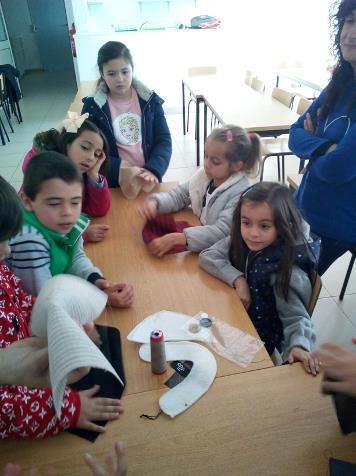
Group B
The students move to the production line, guided by an employee and following the rules and circulation guidelines. They then visit the various stages of the line, observing what happens at each one and receiving information from the employees.
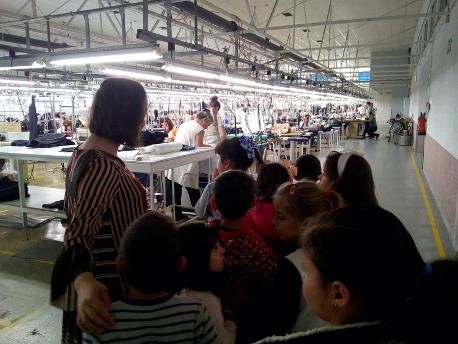
During the visit to the Pattern-Making area, the students observe the placement of garment design patterns on a 2D computer layout, aiming to maximize fabric usage and thus avoid unnecessary waste. They also observe the mold printing area and how the patterns are transferred to the production line, which involves cutting.
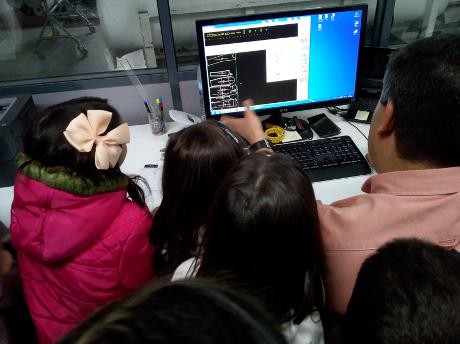
After Group B completes their visit, the groups switch places.
Whole class
After Group B returns to the raw materials exploration room, with the class reunited, the CBI visit is reviewed by discussing sustainability-related questions such as:
-
What kinds of waste result from the company’s activity?
-
What happens to the waste?
-
At which stages of the production process is water consumed?
The production manager discusses the cultural and international influences in the creation of each type and pattern of fabric.
Conclusion of the activity
With the whole class gathered, a systematization activity is conducted to reinforce some concepts through examples related to clothing, using support materials, a document camera connected to a projector, and one Plickers card per student (https://get.plickers.com/). Students are questioned about some of the topics covered during the visit, and the aggregated results of their answers are analyzed.
Students receive a certificate of attendance awarded by the company.
To conclude this activity, samples of raw materials are given to each class to continue the activity in the classroom, producing a postcard with male or female figures and collages of these elements, sending one of the postcards to CBI as a thank-you for the hospitality provided.
The Postais Oliva:
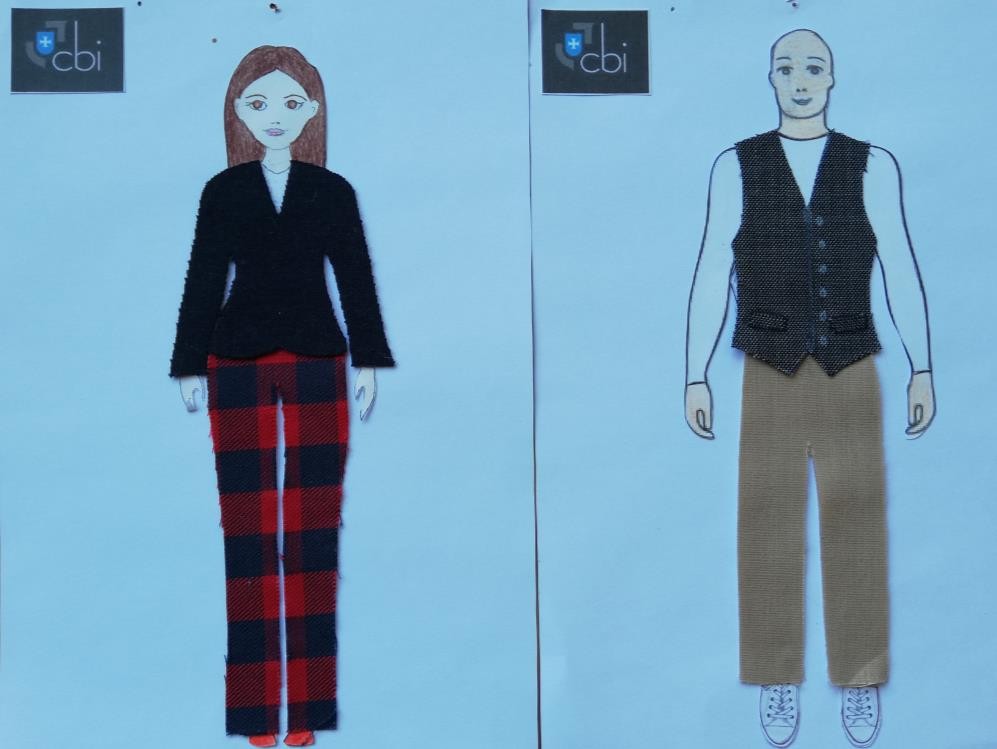
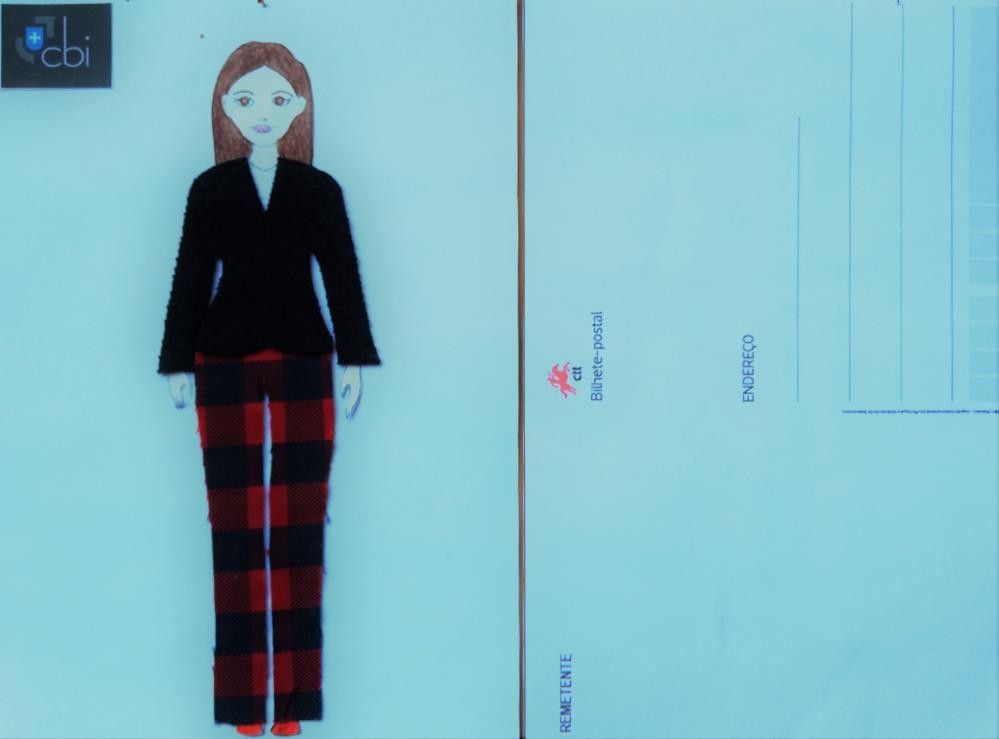
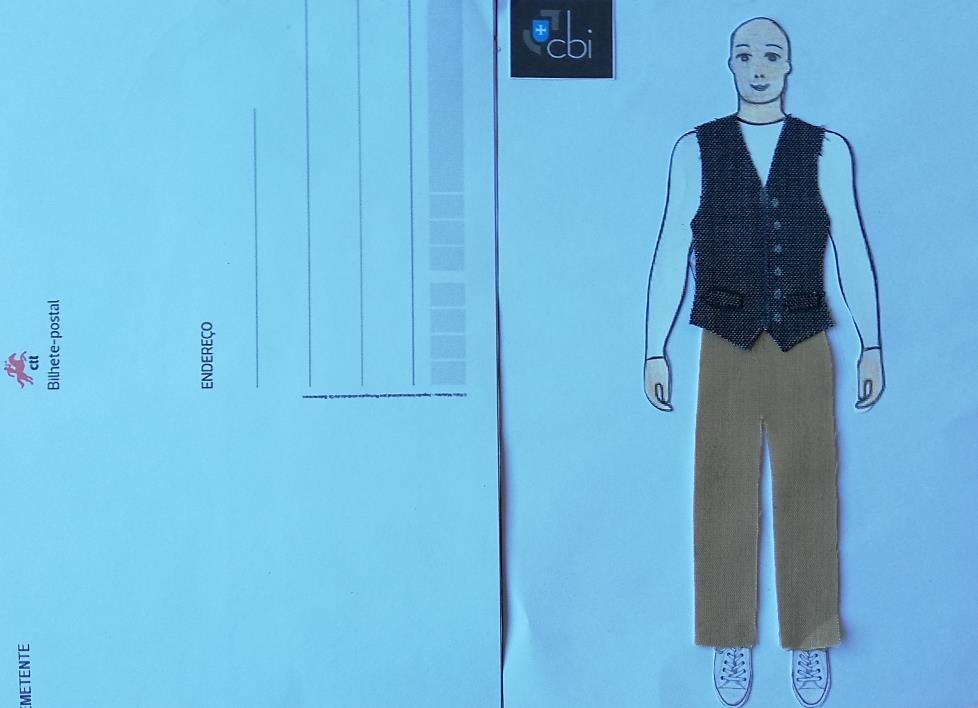
Extension Activities
After the visit, topics related to financial education are explored. As a suggestion, a problem is presented in the student guide that can be adapted to specific needs.
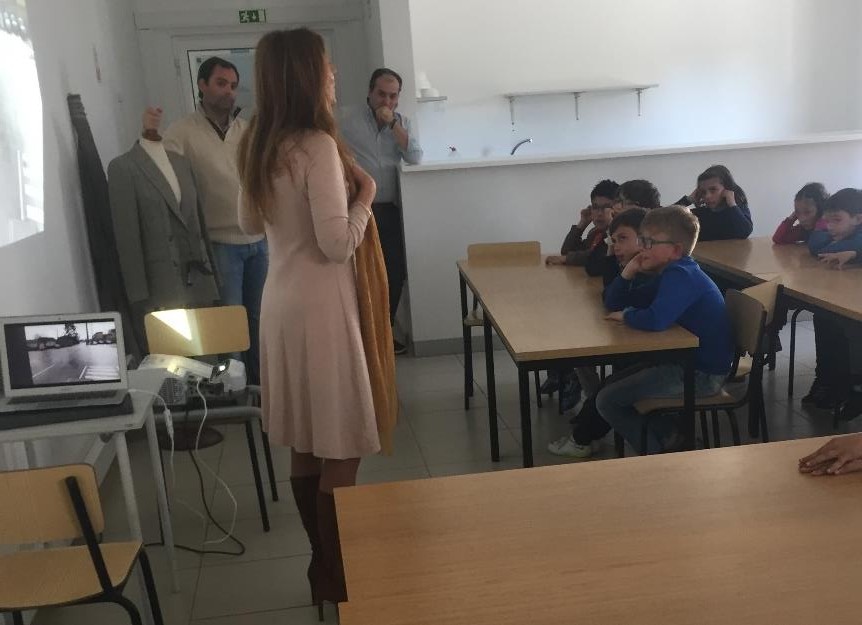
Essential learnings
Evidence / Student action
- Reconhecer frações unitárias como representações de uma parte de um todo dividido em partes iguais, em diferentes contextos, e dar exemplos.
- Atividade do “estendal” – (Ver ponto “grupo A”); resposta à questão do Guião do Aluno.
- Resolver problemas envolvendo a organização e tratamento de dados em contextos familiares variados.
- Respostas ao Guião do Aluno (ver ponto “Educação financeira…”).
- Reconhecer influências de outros países e culturas em diversos aspetos do seu dia a dia (... vestuário, ...).
- Respostas ao questionamento do diretor de produção – (Ver ponto “grupo A”); Respostas às questões formuladas a partir do plickers.
- Saber colocar questões sobre problemas ambientais existentes na localidade onde vive, nomeadamente relacionados com a água, a energia, os resíduos, o ar, os solos, apresentando propostas de intervenção.
- Discussão de questões sobre sustentabilidade (ver ponto “toda a turma”). Resposta à questão 4 do Guião do Aluno.
Rizzo, J. (2017). Striking photos of cultural fashions you have to see. National Geographic. Consultado em https://www.nationalgeographic.com/travel/travel-interests/arts-and- culture/style-culture-fashion-around-world/ em 6 de fevereiro de 2019.
Santa Nostalgia. (2016). Oliva – postais de trajes típicos - Laura Costa. Consultado em http://www.santanostalgia.com/2016/06/oliva-postais-de-trajes-tipicos-laura.html em 6 de fevereiro de 2019.
In this activity, we will visit the CBI factory, organized into 2 groups, with the objectives to:
a. Learn about some raw materials used in clothing production;
b. Learn about the stages in clothing production, from raw material to the final garment.
-
Observe the following clotheslines, where two socks (blue at 0 and yellow at 1 meter) are hung one meter apart.
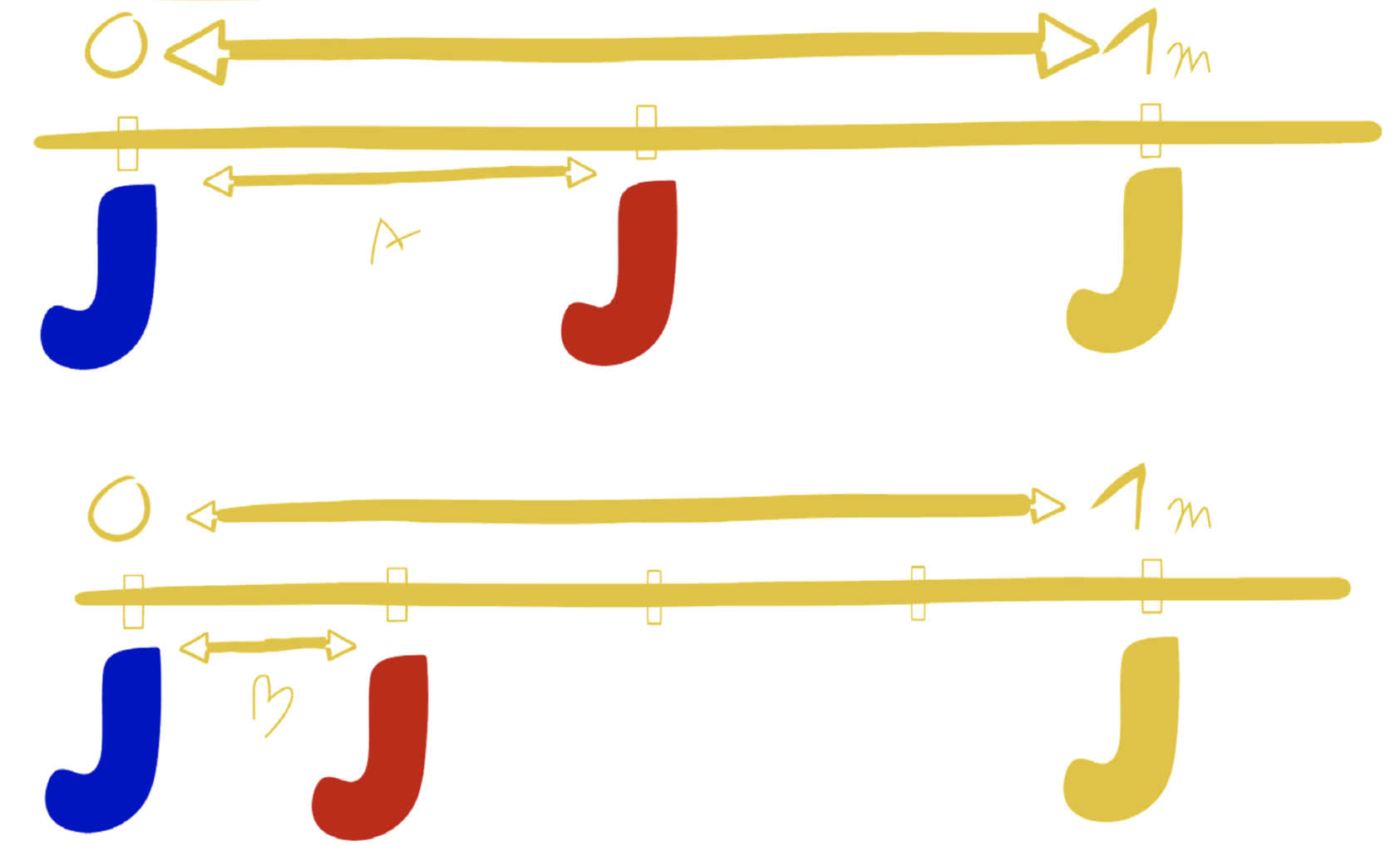
Represent the distance from the red sock to the blue sock on the two clotheslines using a fraction.
A =
B =
-
Compare the following figures, which represent cutting lines of the same piece of fabric to produce socks. Which one shows less fabric waste?

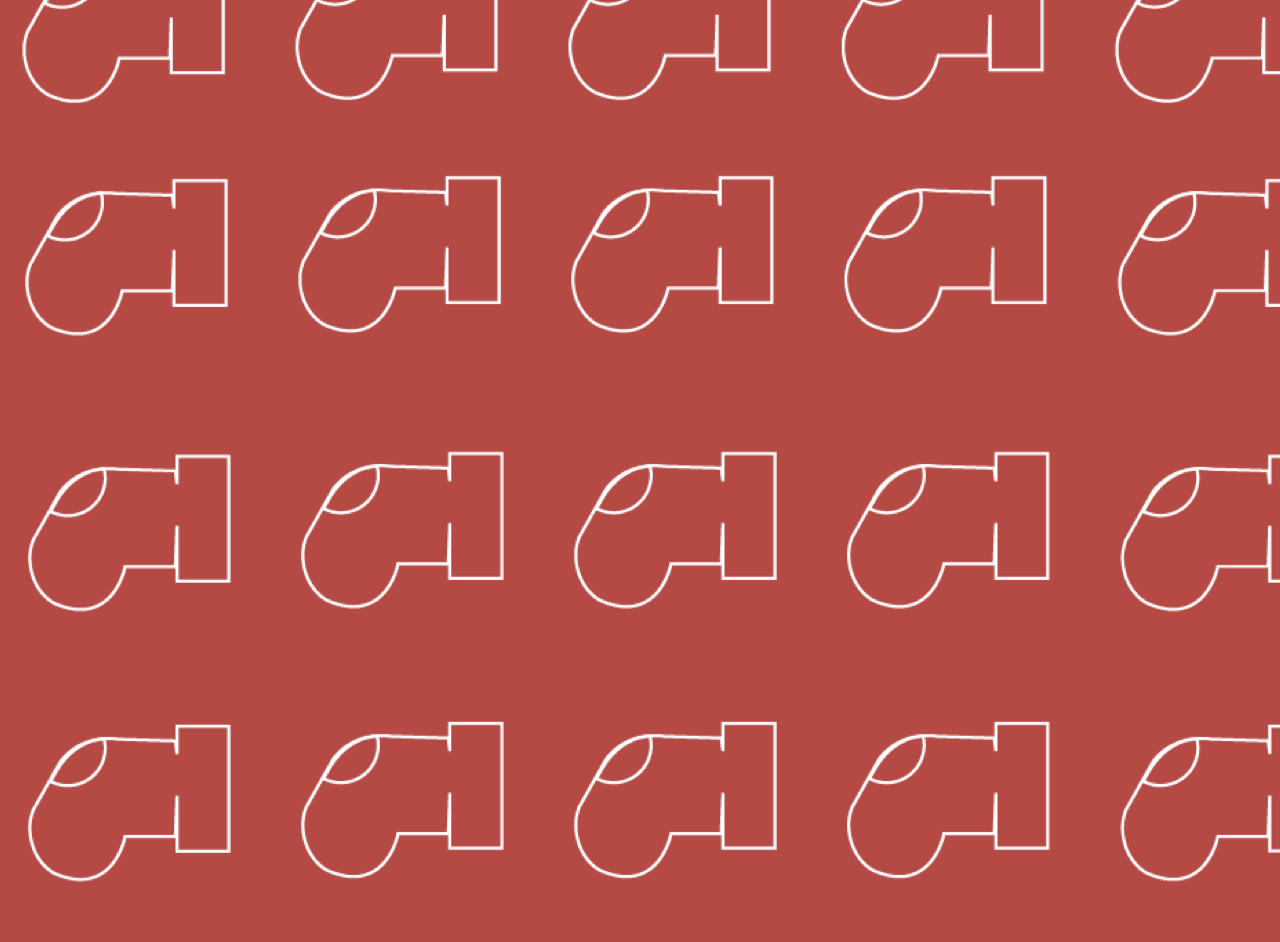

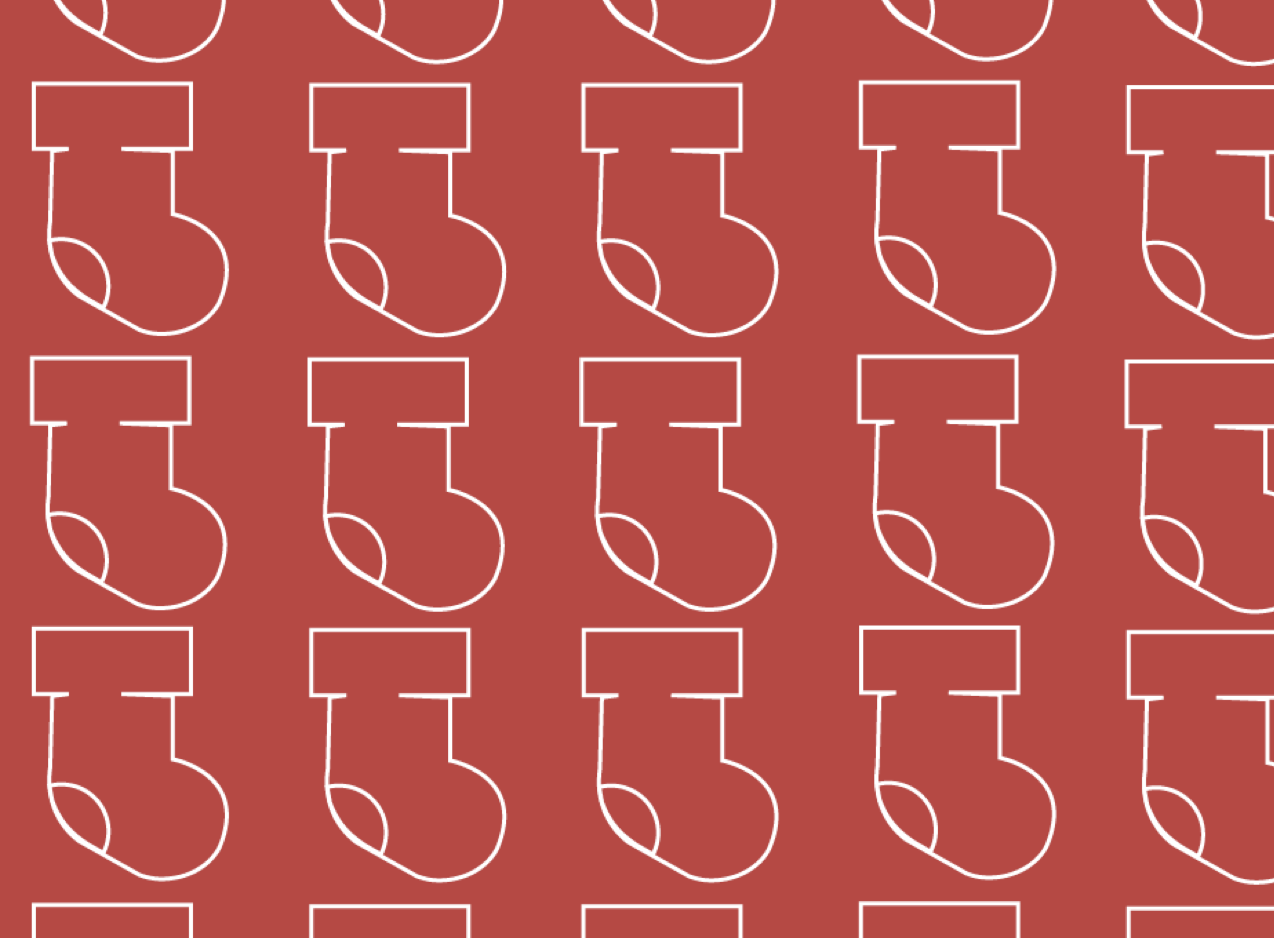
-
What are the waste products generated by CBI’s activity? (Mark the correct option)
A. Fabric
B. Water from washing the garments
C. Carbon dioxide from burning waste
D. All of the above
-
Do the wastes generated by the company cause environmental, social, or economic problems? What question would you ask the company director to better understand the situation?
-
The boiler water at CBI is used for (mark the correct option):
A. Heating spaces
B. Ironing irons
C. Washing dishes
D. All of the above
-
Using scraps and pieces provided by CBI with various patterns and colors, create a postcard with male or female figures and collages of these elements, using as a reference the Postais Oliva.
At the end, after a class vote, send the most voted postcard to CBI as a thank you for their hospitality.
Financial Education – the expenses and income of a CBI family
Consider that a “typical” CBI family has the following income and expenses in the upcoming month of April:
| Income or expenses | Activities, locals | Amount |
|---|---|---|
|
Mortgage payment |
325,00 € | |
|
Insurance |
65,00 € |
|
|
Food / Grocery |
60,00 € | |
|
Clothing / Footwear |
75,00 € | |
| Transport | 72,00 € | |
|
Telecommunications (mobile and internet) |
93,50 € | |
|
Father’s salary |
1015,00 € | |
|
Water, Electricity, Gas |
100,00 € | |
|
Leisure (travel, books, cinema) |
85,00 € | |
|
School supplies for child |
30,00 € | |
|
Food allowance (father and mother) |
55,00 € | |
|
Extracurricular activities (swimming lessons) |
60,00 € | |
|
Mother’s salary |
965,00 € |
-
Identify the Expenses by marking them in column 1 of the previous table with the letter E (for Expense).
-
Identify the Income by marking them in column 1 of the previous table with the letter I (for Income).
-
Prepare the budget of the “typical” CBI family. Use the following tables:
Monthly budget of the “CBI Family” for the month of April
| Income | € |
| Total |
| Expenses | € |
| Total |
-
Observing the previous tables, can we say that the family has money left over in the month of April? If yes, how much?
-
If in the month of April the family wants to travel (expense: €200) and buy a new computer (price: €450), will they have enough money?

